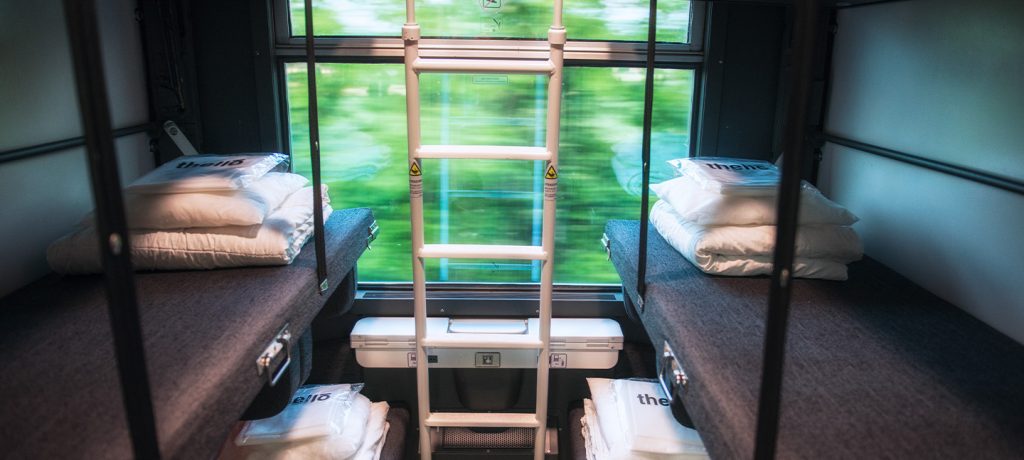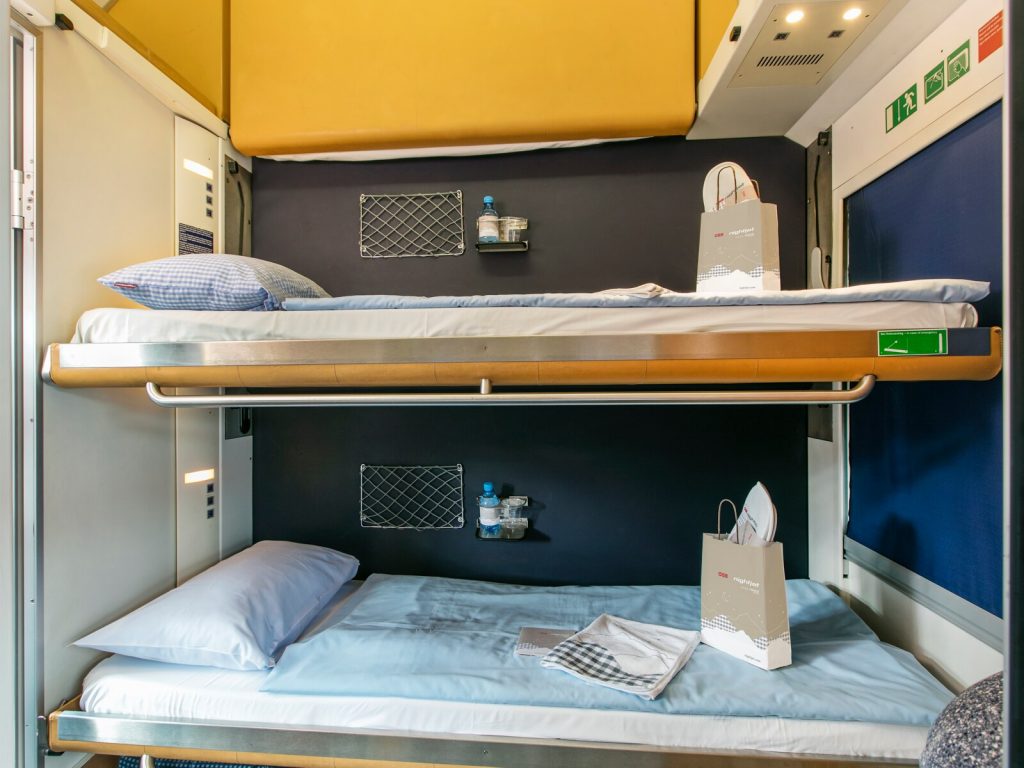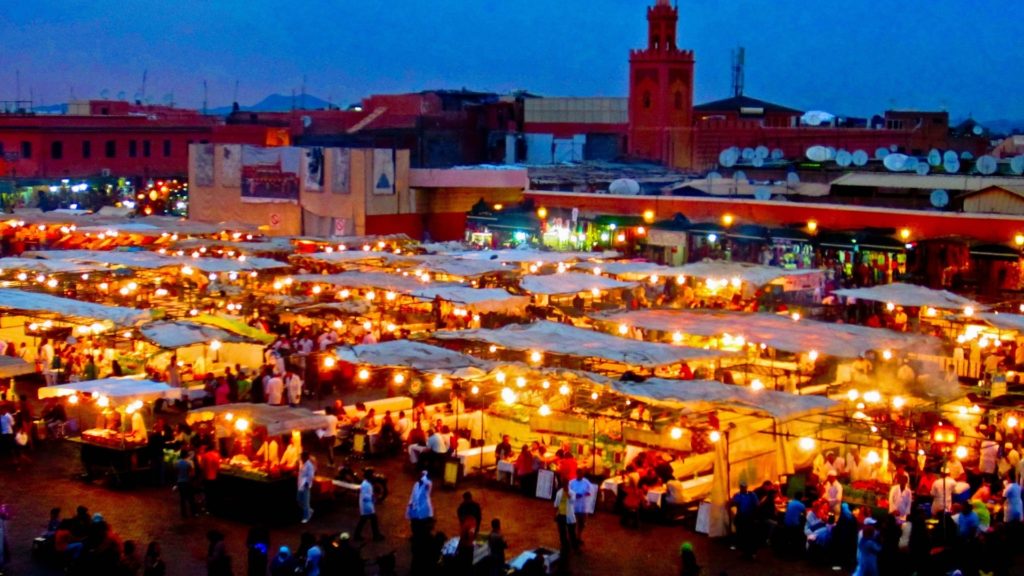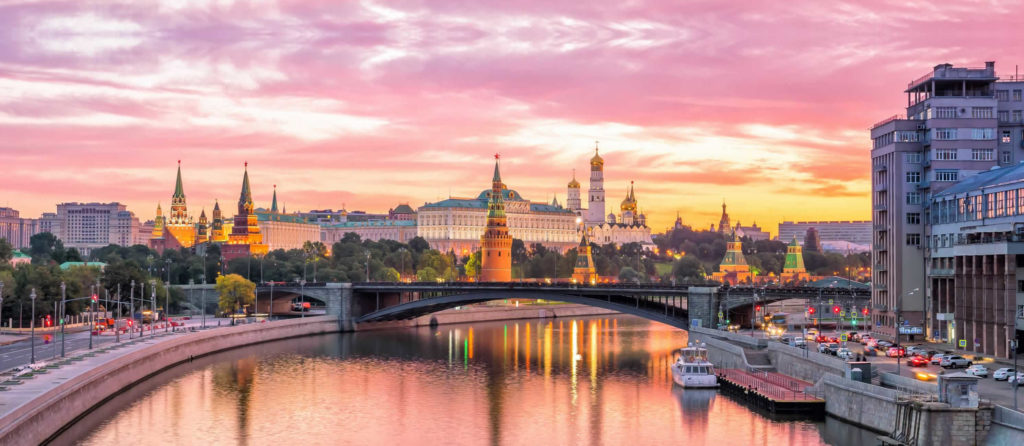
What is it Like to Travel on an Overnight Train in Europe?
Overnight trains are an adventure. Boarding a train in the centre of one city and arriving the following morning in the centre of another city is not only a wonderful experience, it saves on a night’s accommodation and leaves you ready to explore the city once you arrive.
On a TMR holiday, you will be travelling in your own private compartment, for one, two or three people depending on how many are travelling. If you are a smaller group then two or more compartments can be arranged.
Boarding the train
Sometimes you will be boarding at the station where the train starts, in which case it will be announced for boarding around half an hour beforehand. You can settle into your compartment and have your tickets checked by the inspector or attendant before the train sets off. If you are boarding at a station along the line, make sure you arrive in good time beforehand and many stations will have a map of the platform showing you which sector to stand in according to your carriage number.
Catering
The days of a glamorous buffet car with chefs slaving away in the galley producing masterpieces are long-gone, apart from on luxury trains such as the Venice Simplon-Orient-Express. Snacks and drinks are sometimes available from the carriage attendant and breakfast is sometimes served in the morning, but it’s generally best to have a meal before boarding or taking a picnic on board (there are no restrictions on this).
Border controls
Within the Schengen area, which covers most of the European Union, there are no border checks, apart from occasional spot-checks. When you leave the Schengen Zone you will be woken by border guards on each side of the frontier, to check your passports – typical routes that include this would be Budapest to Bucharest (Schengen Hungary to non-Schengen Romania) and Bucharest to Istanbul.
Compartments
You will have your own private compartment, which on some routes can be booked with ensuite WC and shower. If the journey is a longer one and there is a large proportion of the journey during daytime, you will find your compartment in the seating configuration, which will not look unlike a regular seating compartment you would find on a daytime train. However, the seating can easily (with the help of your attendant) be transformed into bunk beds, either just at the lower level – for a single, or the lower and upper – for a double, and the lower, middle and upper, for a triple. A ladder is then released for the middle or upper bunk occupants to be able to access their berths. You will often find a reading light, storage pouch for valuables and occasionally a complimentary bottle of mineral water. There will either be sheets and blankets or a light duvet. Temperature and the loudness of the public address system can also be controlled within your private compartment.
Reaching your destination
If you are not alighting at the end-destination of your train’s route, you will be woken or alerted that your station stop is approaching. However, this is never to be relied upon and we always recommend that you set your own alarm to ensure that you wake up in time!
Overnight train routes in Europe
There are a number of different routes across Europe operated by a range of different train operators. RailJet are operated by Austrian Railways (OBB) and are generally considered to be the best overnight sleepers, they cover routes such as:
- Dusseldorf and Cologne to Vienna
- Hamburg and Berlin to Zurich
- Munich to Rome
- Vienna to Rome
Thello operate one overnight service between Paris and Venice, which also calls at Lake Garda and Verona along the way. Caledonian Sleeper operates within the UK, from London to the major cities of Glasgow and Edinburgh as well as up to the Scottish highlands on routes to Inverness and Fort William. RENFE (Spanish Rail) operate both the Lusitania train between Madrid and Lisbon, and also the Sud Express which covers a route from Lisbon to Hendaye in France, which has easy connections to Bordeaux and Paris.
EuroNight is a collaboration between different national rail operators and many routes in central and Eastern Europe are operated under this name, for example:
- Budapest to Bucharest
- Munich to Zagreb
- Vienna to Kiev
- Sofia to Istanbul
- Belgrade to Thessaloniki
Russian Railways (RZD) also operate overnight trains into and out of the European Union. The Paris-Moskva Express travels from Paris through Berlin and Warsaw, while there is another weekly service that runs from Moscow to Nice on the French Riviera.
Tips and Home Truths about travelling by overnight train in Europe
- There are no double-bed configurations on overnight trains – if there are two people travelling, one of you needs to be able to get onto the upper bunk.
- Restaurant cars are a thing of the past – have dinner before you get on or take a picnic
- Set an alarm if you are not alighting at the final station stop of the train, to ensure you don’t miss the stop!
- You will feel the train moving! Don’t expect it to be completely smooth-sailing and don’t plan too hectic a day for the day after your overnight journey, as sleeping through is not guaranteed.
- Don’t plan any tight connections around overnight trains – there is only one train and it cannot be missed. Allow plenty of time if you are arriving into the departure city from somewhere else.


















